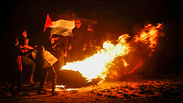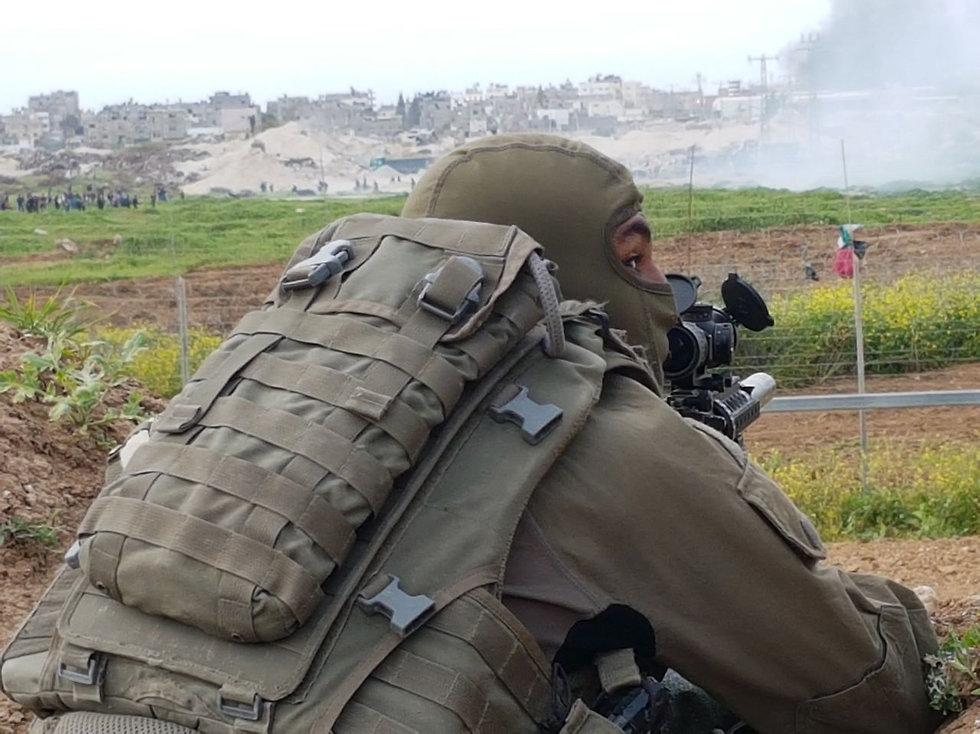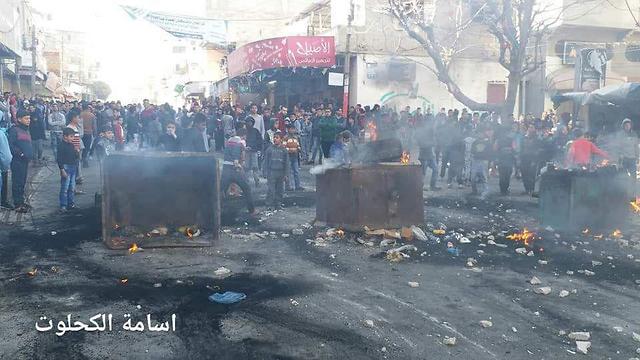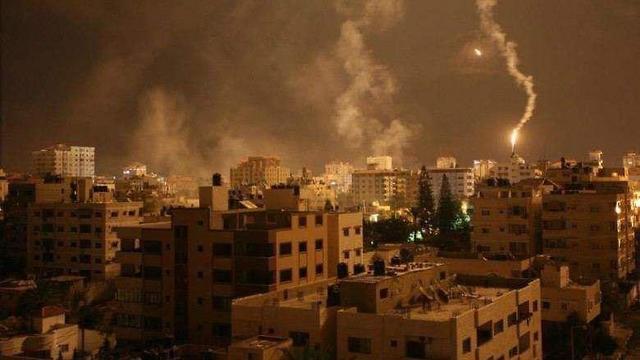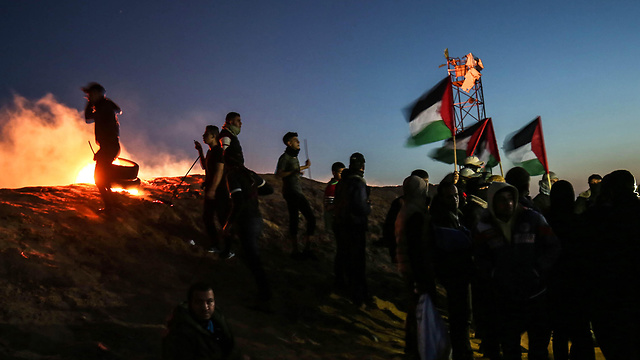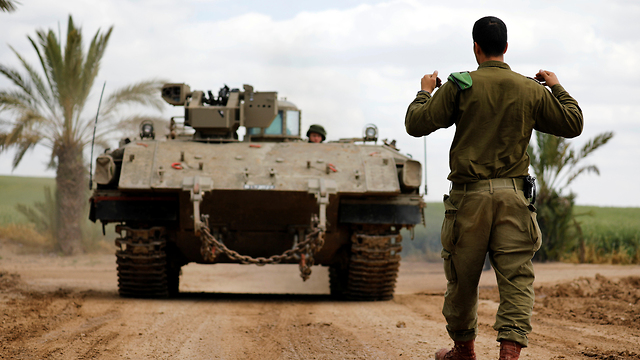
Bracing for Gaza’s ‘million man march’
Analysis: The West Bank is at a boiling point, the Palestinian economy is weak and the motivation for terror attacks high, and now Hamas is planning its biggest demonstration ever to mark the anniversary of the ‘March of Return’; Israel fears events may spin out of control with dozens of casualties and a possible military confrontation
The Israel Defense Forces is preparing for tens of thousands of Palestinians to gather along the Israel-Gaza border next weekend, as they join a Hamas "million man march" to mark the one year anniversary of the “March of Return" protests held regularly at the frontier.
The IDF will deploy hundreds of snipers along the Gaza border in anticipation of the march, set to take place on March 29.
According to IDF assessments, Hamas will not only try to re-enact the earlier Friday marches attended by thousands of Gazans, but will in fact seek to surpass them by transporting more than 50,000 people to the main protest points along the border fence.
The IDF is preparing for the disturbances by doubling the amount of troops that will be deployed along the Gaza border in order to thwart any infiltration attempts by hostile Palestinians into Israel and prevent attacks at the border town communities.
The army believes that Hamas will make an effort to channel the frustrations of the Gaza population — which has been protesting the harsh economic reality under Hamas rule— away from themselves and toward Israel, near the fence. Therefore, Israel is anticipating an unusual amount of violence and for events to spiral out of control.
So far, Hamas has managed to forcibly suppress the street protests against it, including assaulting journalists, human rights activists and the local Fatah leader in the Strip (a rival faction). The protests were organized by minor Palestinian parties in Gaza, mainly from the left, against Hamas and to a certain extent Islamic Jihad. Alongside the violence, some 600 people were arrested by Hamas authorities.
Those same organizations that protested Hamas — the Democratic Front for the Liberation of Palestine (DFLP), the Popular Front (PFLP), the Communist Party, the Palestinian Democratic Union (FIDA), Fatah and the Arab Liberation Front — are also helping to organize the weekly protests along the border.
Israeli officials estimate that these organizations will stand alongside Hamas, just like on every Friday for the last year (except last week), for the planned “million man march.” However, the Hamas leadership is aware that although the Gaza street protests under the banner of “Let Us Live” may have been suppressed, the criticism against Hamas, both from the street and from the Palestinian Authority in the West Bank, will continue. Until a solution is found that will improve the economic situation, the Gaza street could well rise up again.
There are signs that this Friday’s protest, at which 10,000 protesters are expected, is a dress rehearsal for the big event next week. On the day after the "million man march," Israeli Arabs will mark Land Day, a day expressing solidarity with the Palestinians in the territories.
In the meantime, there has been a return of the nightly harassment units, Gazans dispatched to make the lives of Israelis living on the other side of the border miserable. These units resumed their activities this week with loud noise and smoke, after a 10-day pause due to Egyptian-brokered negotiations, and the rate of these activities is increasing.
Israel is preparing for a worst case scenario, in which the protests get out of hand and there are dozens of casualties, as happened last May. Such a circumstance may set off another round of military conflict, which Israel has been trying to avoid.
Furthermore, Land Day kicks off a two-month period consisting of several of noteworthy days, each of which may be used by Hamas as a focal point for violence. Following Land Day on March 30 is the Day of the Palestinian Prisoner on April 17; in May there is Nakba Day (commemorating the effects of Israeli independence on the Palestinians) and in June, Naksa Day (when the Palestinians mark the Arab defeat in the 1967 Six-Day War). In between is the Muslim holy fast month Ramadan and the agitation it can entail.
The only way to stave off this frightening scenario is to implement the partial understandings reached between Egypt, Israel and Hamas. Most of the subject matter was found to be acceptable by both sides. Israel agreed to allow Hamas to expand the Gaza fishing zone to 12 nautical miles from the Gaza coast and allow the UN to fund the employment of some 90,000 Gazans currently without work. Israel also agreed to provide Gaza with additional electricity capacity.
Egypt proposed establishing two “purple zones,” at the Erez Crossing for example, where Israeli and Palestinian businessmen can meet and do business, and Israel expressed willingness to increase the number of permits given to Gaza businessmen allowed to enter these zones. Israel might also open the Karni Crossing and in the long term, establish industrial zones at these crossings.
Hamas for its part is being asked to reinstate the 300-meter security zone adjacent to the border, to guarantee that the protests keep their distance from Israeli territory.
In Israel, officials expect that if the sides manage to reach an agreement and the Qatari funds continue to flow at a rate of $30 million a month, Hamas will make an effort to prevent a deterioration since its financial situation is very dire. In the last fiscal year, the Hamas government has only managed to raise 30% of its annual budgetary needs.
Iran has also drastically cut its aid to Hamas, which has been forced to raise taxes on residents and businesses in Gaza. Cigarette prices jumped by 200% and pita bread by 40%. Such harsh economic realities brought Gazans out into the streets to protest. Therefore, it is crucial for Hamas to reach an agreement; at least until the summer, as Israel is asking.













